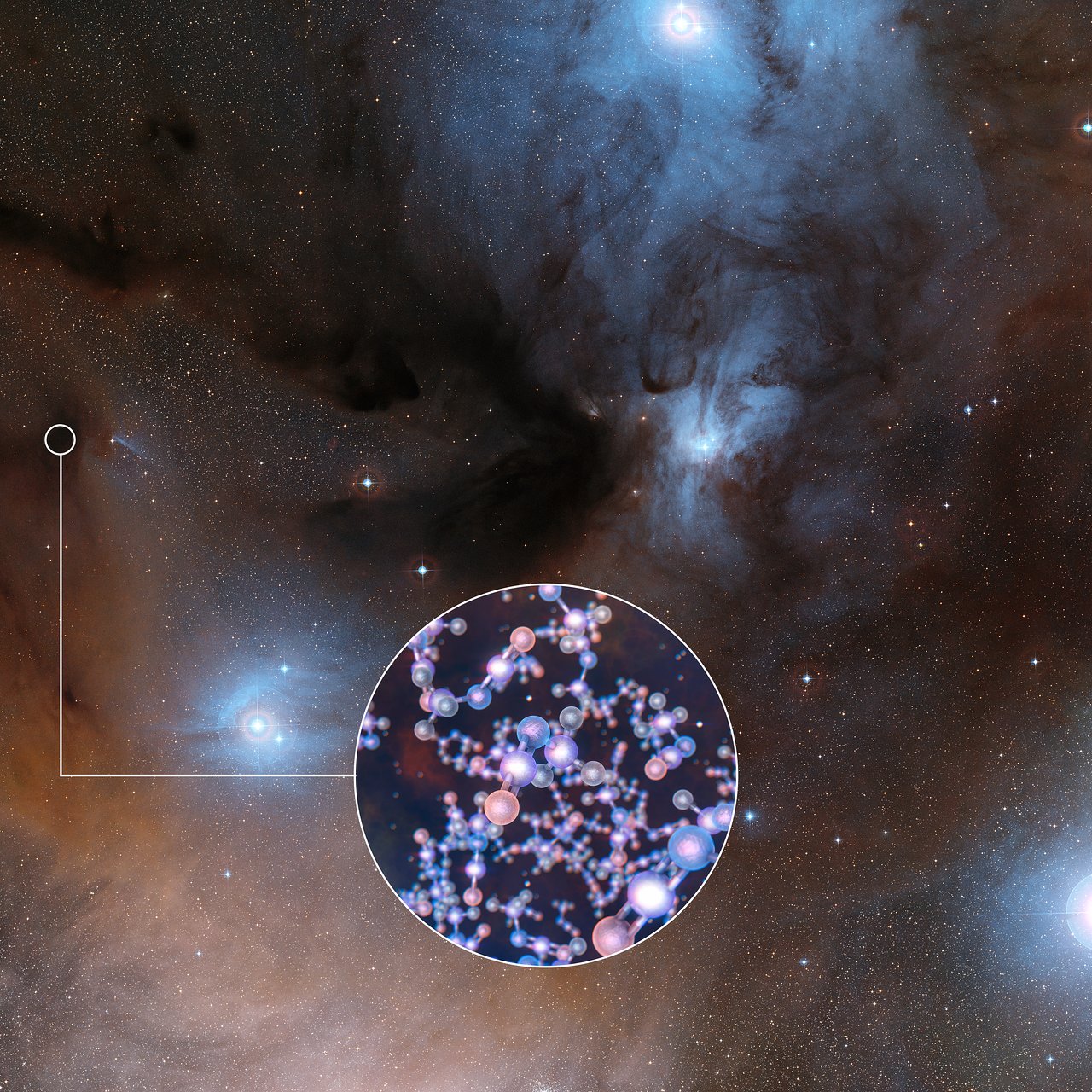Key Building Block of Life Found Around Young Sun-Like Stars
Astronomers have discovered an important building block for life in the disk of dust and gas surrounding infant sun-like stars.
The young, triple-star system IRAS 16293-2422 is located approximately 400 light-years from Earth in the constellation of Ophiuchus. The infant stars in this system have a similar mass to the sun, but are still in the early stages of formation.
Researchers have detected a complex organic molecule called methyl isocyanate near the stars. This is the first time that the molecule, which can be a precursor to life, has been found around sun-like protostars, according to a statement from the European Southern Observatory (ESO). [6 Most Likely Places for Alien Life in the Solar System]
Previously, astronomers found a simple form of sugar in the disk of gas and dust surrounding IRAS 16293-2422. The sugar, called glycolaldehyde, is linked to the formation of RNA, which is one of the building blocks of life.
"This star system seems to keep on giving! Following the discovery of sugars, we've now found methyl isocyanate," Niels Ligterink and Audrey Coutens, researchers at the Leiden Observatory in the Netherlands and University College London, respectively, said in the statement. "This family of organic molecules is involved in the synthesis of peptides and amino acids, which, in the form of proteins, are the biological basis for life as we know it." Ligterink and Coutens make up one of two teams of astronomers who detected the new molecule; the findings are detailed in two studies that will be published in the Monthly Notices of the Royal Astronomical Society.

Using the Atacama Large Millimeter/submillimeter Array (ALMA) radio telescope in Chile, the astronomers found signatures of methyl isocyanate molecules in the inner regions of the dust and gas surrounding each of the stars, according to the ESO statement. "We are particularly excited about the result because these protostars are very similar to the sun at the beginning of its lifetime, with the sort of conditions that are well suited for Earth-sized planets to form," Rafael Martín-Doménech and Víctor M. Rivilla, co-lead authors of the second study, said in the statement. "By finding prebiotic molecules in this study, we may now have another piece of the puzzle in understanding how life came about on our planet."
Earth and other planets in the solar system formed from material left over after the formation of the sun. Therefore, studying young, sun-like stars like IRAS 16293-2422 can help astronomers learn more the early years of our solar system.
Get the Space.com Newsletter
Breaking space news, the latest updates on rocket launches, skywatching events and more!
In addition to the ALMA data, both teams of researchers used computer chemical modeling to better understand the origin of the methyl isocyanate molecules.
Models suggest that the molecules likely formed on "icy particles under very cold conditions that are similar to those in interstellar space," Ligterink said.
"This implies that this molecule — and thus the basis for peptide bonds — is indeed likely to be present near most new young solar-type stars," he added.
Follow Samantha Mathewson @Sam_Ashley13. Follow us @Spacedotcom, Facebook and Google+. Original article on Space.com.
Join our Space Forums to keep talking space on the latest missions, night sky and more! And if you have a news tip, correction or comment, let us know at: community@space.com.

Samantha Mathewson joined Space.com as an intern in the summer of 2016. She received a B.A. in Journalism and Environmental Science at the University of New Haven, in Connecticut. Previously, her work has been published in Nature World News. When not writing or reading about science, Samantha enjoys traveling to new places and taking photos! You can follow her on Twitter @Sam_Ashley13.









